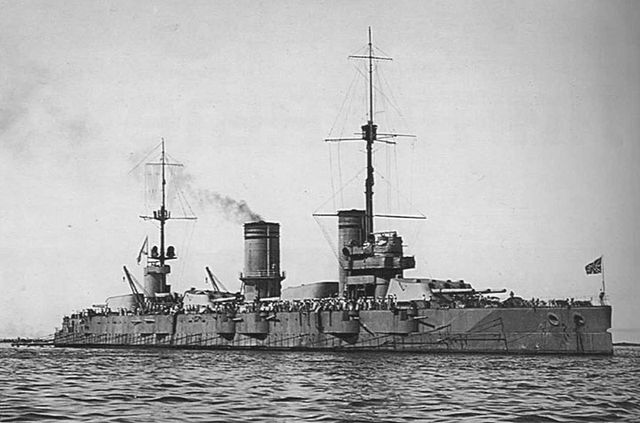Russian battleship Sevastopol (1911)
Sevastopol was the first ship completed of the Gangut-class battleships of the Imperial Russian Navy, built before World War I. The Ganguts were the first class of Russian dreadnoughts. She was named after the Siege of Sevastopol during the Crimean War. She was completed during the winter of 1914–1915, but was not ready for combat until mid-1915. Her role was to defend the mouth of the Gulf of Finland against the Germans, who never tried to enter, so she spent her time training and providing cover for minelaying operations. Her crew joined the general mutiny of the Baltic Fleet after the February Revolution and joined the Bolsheviks later that year. She was laid up in 1918 for lack of manpower, but her crew joined the Kronstadt Rebellion of 1921. She was renamed Parizhskaya Kommuna after the rebellion was crushed to commemorate the Paris Commune and to erase the ship's betrayal of the Communist Party.
Sevastopol during World War I
Plan view of the Gangut class
The Gangut class, also known as the Sevastopol class, were the first dreadnoughts built for the Imperial Russian Navy before World War I. They had a convoluted design history involving several British companies, evolving requirements, an international design competition, and foreign protests. Four ships were ordered in 1909, Gangut, Poltava, Petropavlovsk, and Sevastopol. Construction was delayed by financing problems until the Duma formally authorized the ships in 1911. They were delivered from December 1914 through January 1915, although they still needed work on the gun turrets and fire-control systems until mid-1915. Their role was to defend the mouth of the Gulf of Finland against the Germans, who never tried to enter, so the ships spent their time training and providing cover for minelaying operations. Their crews participated in the general mutiny of the Baltic Fleet after the February Revolution in 1917, and joined the Bolsheviks the following year.
Gangut during World War I
Right elevation and deck plan as depicted in Brassey's Naval Annual 1912
The forward triple turret of Petropavlovsk
Gangut and Poltava fitting out during the winter of 1911–1912





